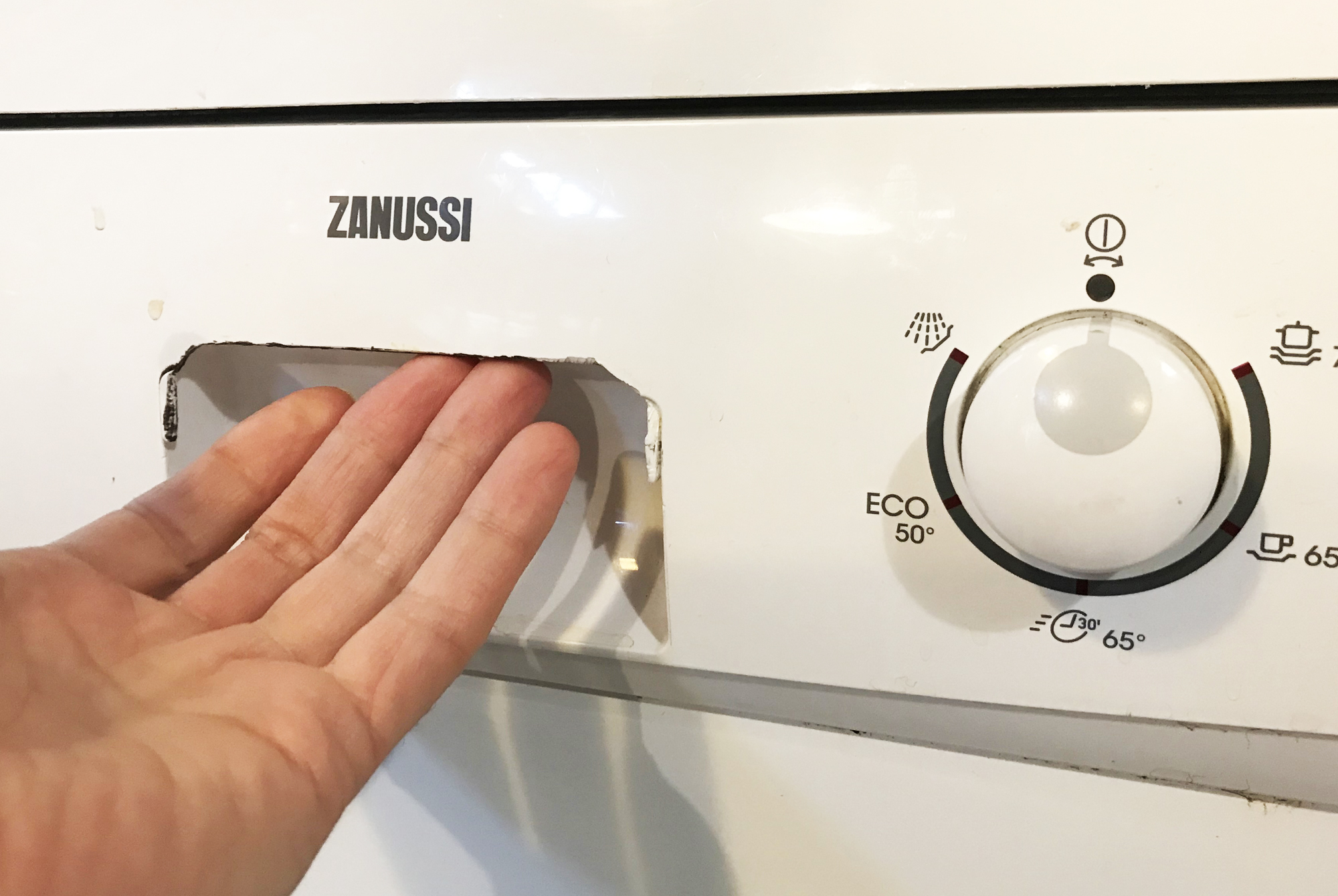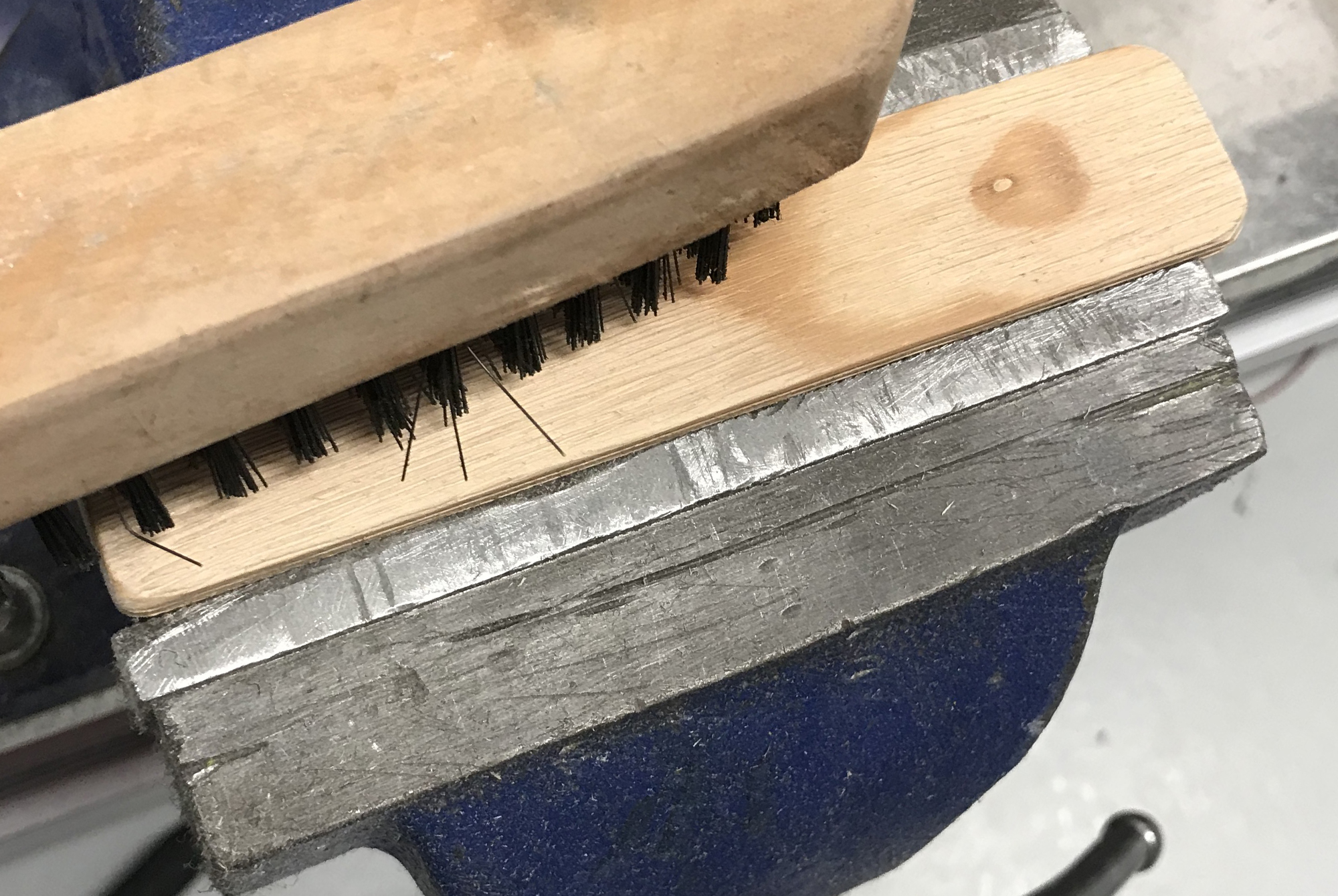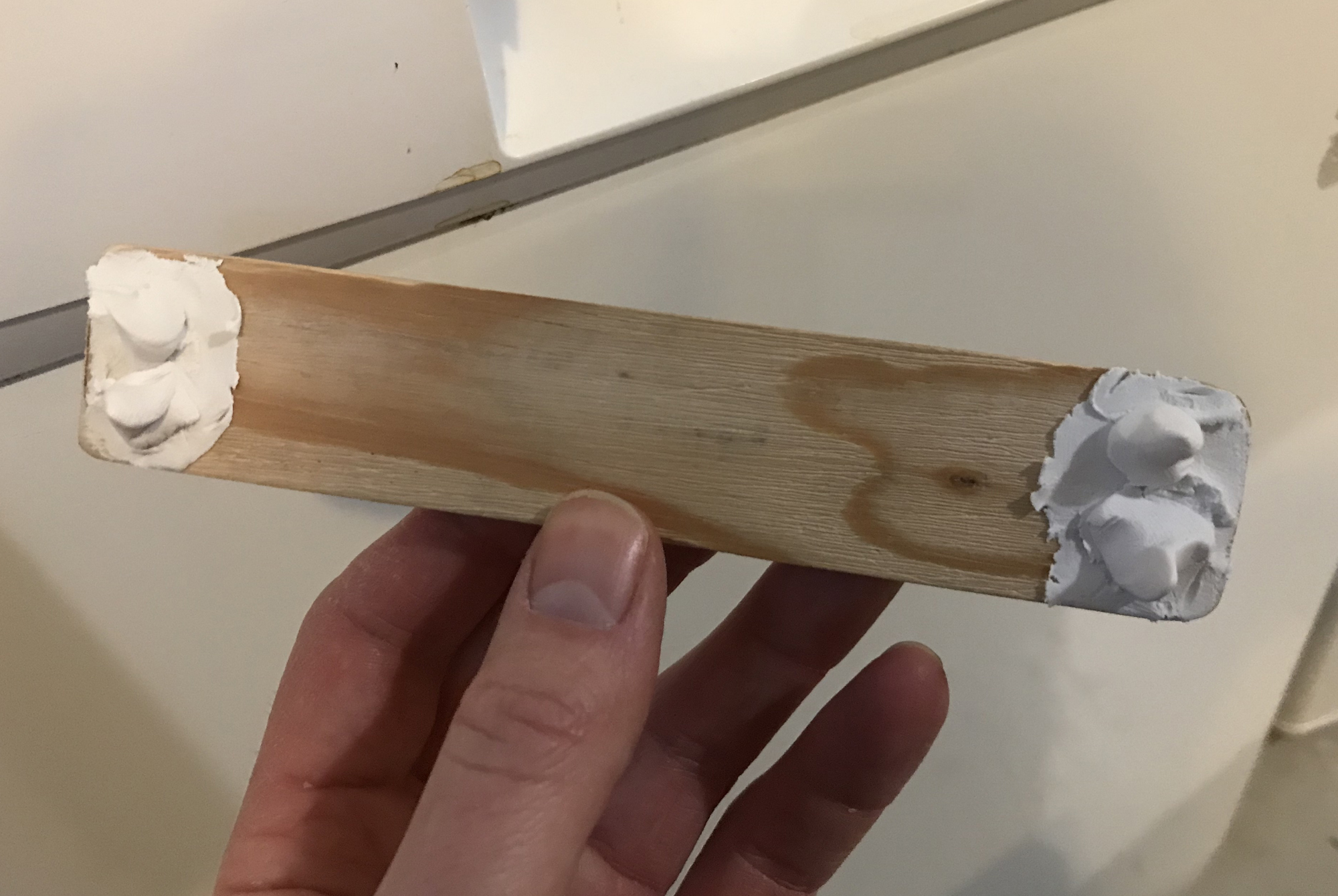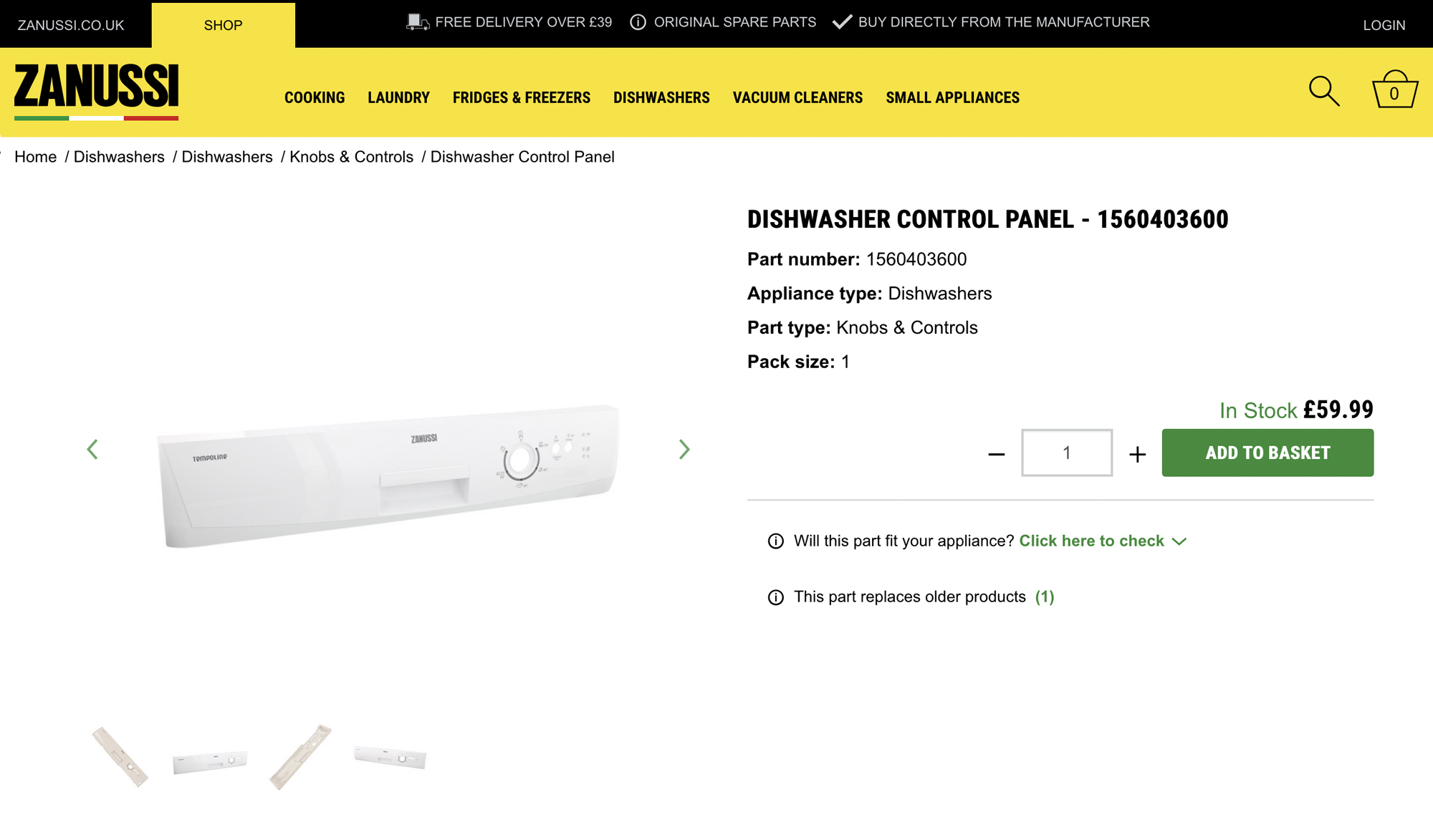Here is a rather funny illustration of human resilience; the handle of the dishwasher at Sugru HQ had broken off and everyone intuitively worked around the problem. The missing handle did not mean the dishwasher was no longer useful, it simply meant that another means of opening the door was required and everyone instinctively grabbed the side of the door to yank it open. It’s pretty cool to observe peoples collective instinct in response to the problem. Of course, one could also look at it another way, that it rather succinctly demonstrates a collective laziness 😉

Rather than ignore the problem and resort to yanking the side of the door, I decided I’d fix the damn thing, after all, this is the Sugru dishwasher and if we don’t fix stuff like this, we have no right to preach the virtues of fixing to the world. Fixing this handle was more than a regular fix, it was an important symbolic exercise.
Besides, even though you could argue that replacing the handle might not be entirely necessary, I believe it was critical to prolonging the life of the appliance by preventing an additional related failure. The thing is, if people continued to open the door by yanking it from the side, it would result in damaging the hinge be exerting lateral forces that they were not designed for. The implication of a broken or missing handle would be far greater than a mere inconvenience, it could break the machine so that it no longer worked!
The quick fix.
I wanted to fix this quickly but I also didn’t want to make an ugly bodge! For some reason wood popped into my mind; it’s strong, super easy to work with and we had some lying around so I could get to work straight away. Aside from these super practical considerations, I was thinking about the aesthetics of the fix. I imagined how it would look juxtaposed against the generic white shiny plastic. Could I make this fix beautiful?
I measured the size of the missing handle, the replacement would need to be about 160mm x 25mm x 10mm. In the workshop I found some wood lath that was close enough in size so I popped it into the vice and cut it to length.

Next up I sanded the ends so they were nice and rounded and finally gave it a good rub with a wire brush to remove the soft wood between the grain to make the wood look lovely and natural. In fact, it totally transformed the look of the lath from a budget piece of construction timber to something tactile and beautiful.
Finally it was time to bond it to the plastic door. Without hesitation I chose Sugru, not because I’m a co-fonder and I can get it for free, but because I know it bonds brilliantly to both wood and plastics, will fill the gaps between the flat piece of wood and the curved surface of the dishwasher door and that it would be strong enough to withstand a lot of tugging and pulling. Clearly I love the stuff 😉 This handle was going to be used several times a day so I needed to be pretty confident that it would hold up over time. Incidentally, I’m writing this post over a year after completing the fix and it’s still working so I can say with confidence that I made the right choice 😉

The best way to bond Sugru to wood is to smudge some into the grain first, you can then build more Sugru onto this base layer. To get the best possible bond to the shiny plastic I built four small pyramids of Sugru that I could then slowly and firmly press onto the dishwasher. As the Sugru is pressed against the plastic it naturally spreads out to fill the gaps between the materials.
The final step was to wipe away the excess Sugru that had oozed out around the handle and before I left it to set for 24 hours, I put the following sign over it. It’s amazing how naturally people revert back to using a handle once it’s there!

What was the alternative to this quick fix?
Now that I was finished, I found myself wondering how many years of service this machine had given us and with a little digging (hallelujah online shopping) I was impressed to discover that it had been working hard for five years. Not at all bad for a budget dishwasher that cost just £245.
It’s pretty interesting to think what would have happened to this dishwasher had I not fixed it. I suspect that people would have just continued to grab the side of the door to yank it open. But what if someone did want to buy a replacement part? I searched online with the product number (ZDF2020) to see what that would cost. Zanussi have a load of parts available for this machine on their website but this particular part costs an absolutely astronomical £60!

While I was very impressed that there were so many replacement parts available for a five year old machine, I was in total shock at the cost of this chunk of plastic!!! It costs a quarter of the full price of a new machine!!!! Seriously Zanussi?! This makes absolutely no sense to me at all. I can’t imagine why anyone would invest 25% the price of a new machine to replace one part on a five year old machine. As far as I’m concerned, prices like these are designed to encourage a replace culture and I think companies like Zanussi have a responsibility to not only make spare parts easily available but to sell them at a price that makes financial sense.
I wonder if Zanussi would ever offer spare parts at a better price but also share a list of clever visible fixes that contribute to nurturing a fixing culture? One can dream.
A little charm goes a long way.
The next day I removed the sign and for the final touch, I rubbed some linseed oil into the wood to prevent staining and water damage. I couldn’t do this before as Sugru wouldn’t bond to wood if it was oiled. I might be biased but I think it looks pretty darn good:)

Stepping back to assess the fix I found that it was a rather satisfying improvement, and dare I say that it now looked even better than the original product ever did!!
While my quick fix turned out to be a massive cost saving I observed something much more important. People noticed it, commented on it and actually loved it! Interestingly, this made me realise that had I gone and spent £60 to replace the part (never would have happened 🙂 no one would have noticed or given it a second thought. But as it turned out, my little wood handle engaged people. They commented on it and were genuinely warmed by and appreciated the effort and the beauty of the solution. It seems to me that making a charming and noticeable fix is inherently nicer and in fact, a much more social solution than the invisible and expensive alternative!
The true value of a fix.
While fixing the handle on this dishwasher means that the appliance will be used for longer bringing some obvious benefits. By prolonging the life of the product it extends the value an office of 70 people can extract from the resources used to produce the commodity. This life extension reduces the amount of resources we need to extract from the planet by the simple virtue of delaying its replacement. Win.
Less obviously, this fix actively prevents the domino effect where one break causes additional parts to break. For example, the broken handle would ultimately result in the hinge failing as yanking the door from the side introduces lateral stresses for which it was not designed. The resulting broken hinge would compound the problem and be much more expensive and difficult to fix. The ancient proverb “a stitch in time saves nine” has warned us of this inevitability for nearly two centuries now, predating white goods by over a hundred years yet remains relevant, sage and succinct.
Both of these have the more immediate and quantifiable benefit of saving us money, arguably the most common motivation for taking action. But I believe there is a much more important nebulous factor at play and that is the all the more difficult to quantify, the cultural impact of a fix.
Just to elaborate a little, if I had bought a replacement panel to fix the handle, the break would effectively disappear and be wiped from everyone’s consciousnesses and in doing so removed the potential to expose people to the experience and aesthetic of a fix. By making it visible it actively draws attention to the fix and plays an important role in normalising fixing. This is a big big deal.
In simple terms, the more we see fixes in our lives, the more likely we are to think about fixing when something breaks. Exposure equals influence. And here’s the killer. If you see an ugly fix, it will train you to have a negative impression of fixing. Conversely, if you see a beautiful fix, then you will form a more positive relationship with fixing and this has huge potential.
This fix has been enlightening by simply observing the reaction the simple beauty of the wooden handle had on the people that used it. It highlighted an important fact, that a beautiful fix can influence attitudes and help more people to see fixing as an attractive alternative to replacing stuff.
Thank you for taking the time to read this post, I do hope you find these explorations interesting and they energise you in some way. While you’re here, please do sign up to follow this blog and of course, let me know your thoughts and share your suggestions, I’d love to hear from you.
Until next time, happy fixing.
James

Leave a comment